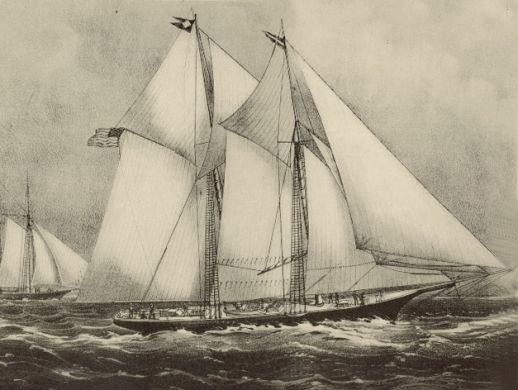Mission Statement
The mission of the Douglas House Foundation is the maintenance, preservation and restoration of the landmarked mansion to showcase its architectural and historical significance.

A short history of the Douglaston Club
The Douglaston Club building and the grounds on which it stands have an interesting cultural and long running history. Prior to the building of the house in 1819 the property around it was in the possession of such notable Queens families as the Hicks, Van Zandts, and Van Wycks. The Van Zandts built the house after acquiring most of the property included on the peninsula.
The next major occupant, George Douglas, bought it in 1862 and added it to property to the south that he had purchased in 1835. After his death the property moved to his son William P., an international traveler, sportsman and sailor. He defended one leg of the Americas Cup race in 1871 in the Yacht Sappho. The current burgee (pennant) of the Douglaston Yacht Squadron is an adaptation of William P.’s personal symbol.
(For more on the illustrious past of Capt. Douglas and the Sappho, click on this link: http://www.americascup.com/en/acclopaedia/boatdestiny/index.php?idIndex=0&idContent=4629)
During the last quarter of the 1800’s Little Neck Bay was a haven for the likes of J.P. Morgan, J.G. Bennett, Thomas Lipton and their yachts. They formed the Douglaston Yacht Club and had a palatial floating clubhouse which was towed out to the Long Island Sound and anchored. From their vantage point on the porches of the floating clubhouse, members could enjoy watching the races in grand style. Late in the 1890’s a nor’ easter ripped through Little Neck Bay and tore the clubhouse from its moorings. The next day it was found across the bay near Crocheron Lake with the club piano standing amidst the wreckage of the clubhouse.
Following this, some members abandoned Little Neck Bay since silt was filling in the bay, and hampering the sailing of large yachts. They moved further east and formed the Manhasset Bay Yacht Club, which still exists today. Others formed the Bayside Yacht Club which had a long run, but no longer exists. One interesting fact is that yachting on Little Neck Bay & Long Island Sound around this time was limited due to the blockades and mine fields set up at the mouth of the East River during the Spanish-American war.
The Douglas era and ownership ended in 1906 when the property and buildings were sold to the Douglas Manor Company for the development of a modern residential park. The Douglas Manor House became the Douglaston Inn and the old Van Wyck farmhouse at 126 West Drive became The Douglaston Country Club. One of the objectives was to maintain a club house for the benefit and enjoyment of its members. A 1988 interview with a Douglastonian born in 1903 revealed that the Club had an 8 hole golf course and twice weekly dancing lessons. The lessons provided the young ladies with the opportunity to board a launch to the Bayside Yacht Club for a Saturday evening of dancing.
In 1918 the Country Club became the Douglaston Club and in 1921 with 144 members the Douglaston Club bought the Douglaston Inn for $61,000. The by-laws stated that the Club is a members only non-profit organization to promote and stimulate cultural, educational and recreational activities for the benefit and participation of its members and to provide a clubhouse for such purposes.
In 1927 the Douglaston Yacht Squadron was formed with 77 members and became the Douglaston Yacht Squadron of the Douglaston Club of Douglaston, Long Island, New York. Its objective was to encourage the sport of yachting, to promote the science of seamanship and navigation and to provide and maintain a suitable anchorage and facilities for the recreation and use of its members.
Over the years the club has been involved in activities with the Douglas Manor Association and other community organizations. Some are the July 4th games, the Country Fair, dinner dances, meetings and socials, as well as many happy family affairs such as weddings, birthdays and special occasion celebrations held at the clubhouse.
Built in 1819 the club house has a long and colorful history. Presently it has 3 bowling lanes, dining/bar service and a new state of the art kitchen.
